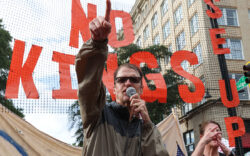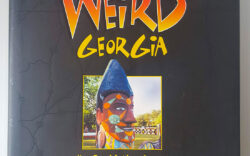On Apr. 22, 1970, millions of Americans participated in the first Earth Day, a national observance of concern for the environment of our country and our planet. More than half a century later, Earth Day continues as an American-born movement that has spread worldwide.
The first Earth Day was led by Wisconsin Sen. Gaylord Nelson, who was appalled at the ecological disaster from an oil spill he had seen off the coast of California in 1969. Nelson pushed for an environmental movement in America that would take some of its ideals and tactics from the civil rights and antiwar movements of the 1960s. The senator and his fellow activists did their work well. Some 20 million Americans attended Earth Day events across the country in 1970—about 10% of the U.S. population at the time.
Nelson and his team chose Apr. 22 as the date for the annual Earth Day to maximize participation by college students, and also as a nod to the date of Arbor Day in the late 19th century U.S. Earth Day became an annual celebration of our fragile planet, and every year since it began there have been worldwide Earth Day observances like marches, vigils and teach-ins about the environment.
In 1990, Earth Day went from an American event to a global movement during its 20th anniversary. Earth Day observances in 1990 took place in 140 countries around the world and in more than 3,000 U.S. towns and cities. More than 200 million people worldwide marked Earth Day’s two decades. In Washington, Sen. Nelson told a crowd of 100,000 that, “We’ve got to raise a conservation generation.” In New York in 1990, a million-strong Earth Day audience in Central Park enjoyed music by Athens’ own B-52s and other performers.
Here in Athens in 1990, a peaceful crowd of some 10,000 people packed College Square downtown for Earth Day music and speeches. Speaking at the event, I said, “A good planet is hard to find. We all live in the same world. We all live under the same sky. We are all a part of the human family sharing the same exquisite speck of creation that we call Planet Earth.”
Our concern for our planet started long before Earth Day was born. In 1807 poet William Wordsworth published lines in a sonnet that still apply to people on our plundered planet today: “Little we see in Nature that is ours;/ We have given our hearts away, a sordid boon!” In 1960, Vance Packard’s book The Waste Makers offered a scathing study of postwar America’s consumerism, planned obsolescence and throwaway products. In 1962, Rachel Carson wrote Silent Spring, a best-selling book that was a prescient warning about environmental rape and ruin.
When humans began space travel in the early 1960s, astronauts and cosmonauts had impressions of their home planet that could have applied during Earth Day. After becoming the first man in space in 1961, Russia’s Yuri Gagarin said, “I saw how beautiful our planet is. People, let us preserve and increase this beauty, not destroy it.” His cosmonaut comrade Valentina Tereshkova agreed. After she became the first woman in space in 1963, she said, “Once you have been in space, you appreciate how small and fragile the Earth is.” After his pioneering spacewalk in 1965, cosmonaut Alexei Leonov called Earth “our home that must be defended like a holy relic.”
Two photos taken by American astronauts became symbols of the environmental movement. In 1968 the crew of Apollo VIII took a photo called “Earthrise” that showed our Earth poised in the blackness of space above the cratered surface of the moon. In 1972, an Apollo XVII astronaut took a photograph of the whole Planet Earth during their lunar flight, a photo that has been dubbed “The Blue Marble.” Apollo VIII astronaut William Anders summed up the view of our planet from deep space by saying words that still are appropriate for Earth Day: “Here we came all the way to the moon, and yet the most important thing we’re seeing is our own home planet, the Earth.”
Like what you just read? Support Flagpole by making a donation today. Every dollar you give helps fund our ongoing mission to provide Athens with quality, independent journalism.










